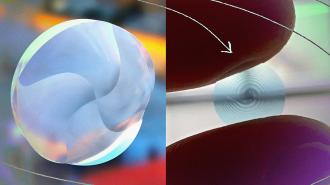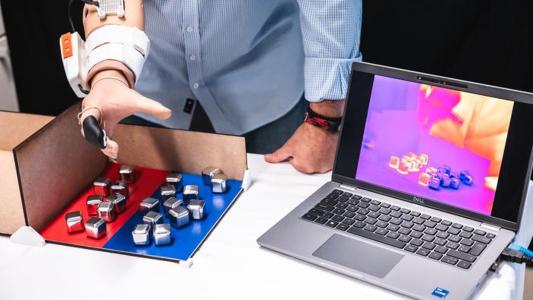New “spiral” contact lenses bend light in a way that corrects problems seeing up close and far away — and unlike existing multifocal lenses, they won’t fail you if the lighting isn’t just right.
The challenge: There’s a good chance you’ll start having trouble focusing on objects up close as you get older, and if you already wear contacts to help you see distant objects, you might choose to trade them in for “multifocal” lenses, rather than buying a pair of reading glasses.
Existing multifocal lenses can cause distorted vision under certain lighting conditions.
While regular contacts have a single strength of vision correction, multifocal lenses contain several, and they’re positioned to work with your pupils, which naturally dilate when you look at distant objects, and constrict when you look at things up close.
Perfect vision isn’t a guarantee, though. Because pupil size plays a key role in how multifocal lenses work, and pupil size changes with lighting, people can experience distorted vision under certain lighting conditions.
What’s new? Researchers in France have now unveiled the “spiral diopter,” a new type of multifocal lens they say overcomes the limitations of today’s options.
“Unlike existing multifocal lenses, our lens performs well under a wide range of light conditions and maintains multifocality regardless of the size of the pupil,” said Bertrand Simon, an assistant professor at the Institut d’Optique Graduate School.
How it works: Laurent Galinier, first author of a paper on the spiral diopter, was studying severe corneal deformations when he got the idea to design a lens with a spiral-shaped surface that would cause incoming light to spin like a corkscrew.
This phenomenon is known as an “optical vortex,” and it would create multiple points of focus on the lens, allowing a person to see clearly at multiple distances without having to worry about the distortions that can accompany traditional multifocal lenses.
Galinier and his collaborators then used advanced fabrication techniques to mold the spiral design he imagined onto a lens.
“Creating an optical vortex usually requires multiple optical components,” said Galinier. “Our lens, however, incorporates the elements necessary to make an optical vortex directly into its surface.”
The spiral contact lenses allow wearers to see clearly at multiple distances.
Looking ahead: Volunteers reported that the spiral contact lenses improved their ability to see at various distances and under different lighting conditions, and the researchers hope to launch a trial to robustly test them outside the lab.
They also plan to explore other uses for the multifocal lenses — in addition to incorporating the tech into glasses for non-contact wearers, they think the design could be useful for a range of applications.
“Future developments with this technology might also lead to advancements in compact imaging technologies, wearable devices, and remote sensing systems for drones or self-driving cars, which could make them more reliable and efficient,” said Simon.
We’d love to hear from you! If you have a comment about this article or if you have a tip for a future Freethink story, please email us at [email protected].






